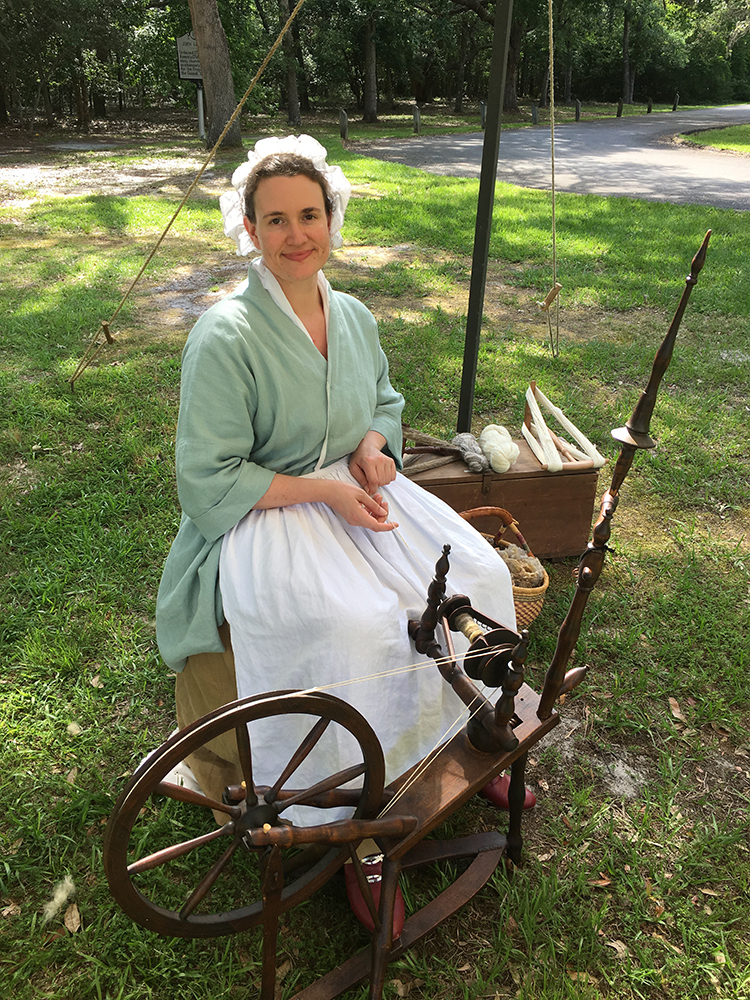A Short Introduction

Maybe we’ve met in person, maybe we follow each other on social media, or maybe you’ve just stumbled across my site while searching for a place to buy yarn or looking for information about the fiber arts, archaeology, or living history. Regardless of how you found me, an introduction of sorts seems to be in order.
I’m the creative type who also enjoys structure, so it’s not surprising that I picked up knitting during my freshman year of college. I wanted a way to make things outside of my art classes, and I’d seen the pretty things on display in the local yarn shop in my college town. After a bit of instruction from my mom, I was on my way to knitting my first project – a scarf, of course. Knitting quickly became a go-to way for me to relax between classes and doing homework. That local yarn shop proved to be a gateway to new types of projects (socks!), and it wasn’t long before the soft baskets of fiber drew me into learning to spin. My campus job provided the funds to purchase a spinning wheel, which became a fixture in my dorm room for the rest of my time as an undergraduate. I even processed part of a raw fleece over part of a semester, which must have been strange for my hallmates to watch. I was having fun though.
After I finished my undergraduate degree, I moved home for a few years – I wanted to study art conservation, which was going to require some additional classes and practical experience. The search for relevant opportunities drew me to volunteering Brunswick Town/Fort Anderson State Historic Site (BT/FA). While helping with various collections-related tasks, I got the opportunity to help with the site’s Heritage Days event by demonstrating spinning. Demonstrating a skill from the 18th century meant I needed to look the part, and I initially borrowed clothing from the site. It wasn’t long before my mom and I started researching clothing of the period so that I could have my own outfit. Over the course of nearly a decade, spinning led to learning about historic clothing, and a move meant finding another site to volunteer at (though I still go to BT/FA regularly). It was through Duke Homestead State Historic Site that I started doing late 19th century, and learned to cook on a cast iron stove. Through the folks that I’ve met over the years at events, I started branching out to even more sites and skills. These days, I’m learning about open-fire cooking and dipping my toes into 18th century medicine. Who knows what’s next.
How does archaeology figure into all of this? In addition to the 18th century and Civil War history of BT/FA, the site is tied to the development of Historical Archaeology in the US. Dr. Stanley South worked here in the 1950s and 1960s, and that work influenced the methods and theories he developed over the course of his career. It was through volunteering with the site that I became involved with a field school for Peace College (now William Peace University). That experience encouraged me to shift my focus from fine art conservation to archaeology. After all, I could still learn conservation for archaeological objects as an archaeologist. Challenges BT/FA was having led to a topic for my MA thesis, which included conserving a number of very interesting artifacts, but that’s a story for another day.